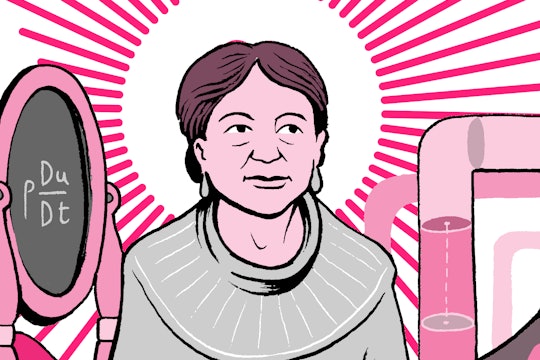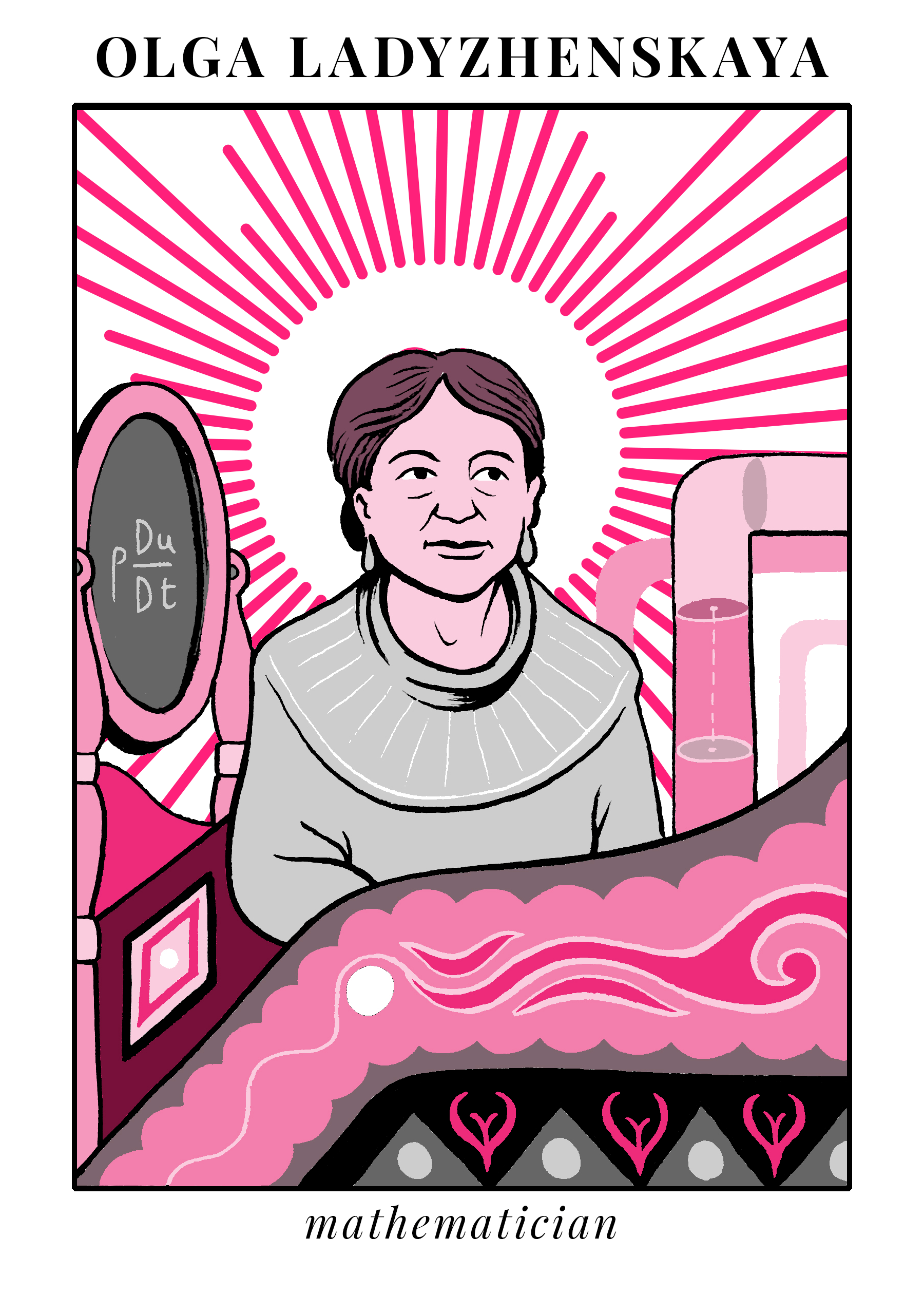
Meet Olga Aleksandrovna Ladyzhenskaya: the Russian mathematician who pushed through the Iron Curtain
In spite of personal tragedy, dire political circumstances and deteriorating health, her passion for mathematics burned bright
Olga Aleksandrovna Ladyzhenskaya (1922 - 2004) was a Russian mathematician, one of the most prolific and important of her time. She made contributions across many disparate areas in mathematics, but what you may not know is how Ladyzhenskaya's passion for mathematics remained undeterred in the face of personal tragedies, dire political circumstances and deteriorating health.

Matteo Farinella
1) Ladyzhenskaya's professors trained her despite her father being executed for treason
Ladyzhenskaya was born on March 7th, 1922 into a family of old Russian nobility. Her father, Aleksandr Ivanovich Ladyzhenski, was a mathematician and a high school principal. He fostered her love and passion for mathematics, and the two would often discuss the field together. However, it was difficult to live in Russia as an intellectual during this time period, especially for those descended from nobility. Ladyzhenskaya's father was tipped off that he was on a "list", but he refused to flee and stayed for the sake of the students who depended on him.
In 1937, Ladyzhenskaya's father was arrested by the NKVD, the Soviet secret police, and executed without trial for being an "enemy of the people" (a story specifically described in Alexander Solzhenitsyn's The Gulag Archipelago). As a result, Ladyzhenskaya's family found themselves in a difficult situation, where her mother and oldest sister had to work to sustain the family.
Soon, Ladyzhenskaya (the youngest in the family) graduated with honors from high school, but was denied entry into Leningrad State University because of her family's political standing. She instead attended Moscow State University.
Fortunately, Ladyzhenskaya's two doctorate supervisors (Vladimir Ivanovich Smirnov and Ivan Georgievich Petrovskii) noted Ladyzhenskaya's remarkable skills in mathematics and mentored her throughout her graduate studies - regardless of her father being executed for treason.
Her father was posthumously exonerated in 1956.
2) Despite the Iron Curtain, she contributed to our understanding of multiple concepts in mathematics
Ladyzhenskaya is best known for her innovative work on the Navier-Stokes equation, which describes the motion of viscous fluids. Despite being unaware of recent developments from Jean Leray and Eberhard Hopf (as a result of the Iron Curtain isolating the Soviet Union in the 1940-50s), she introduced the modified Navier-Stokes equations, which are now referred to as Ladyzhenskaya’s model. Beyond the Navier-Stokes equation, Ladyzhenskaya worked on partial differential equations, including hyperbolic equations and looking into the convergence of the Fourier series.
Ladyzhenskaya's mark on the field of mathematics is difficult to overstate. Her work with differential equations has implications for fields such as metereology, aerodynamics and cardiovascular science. She published over 250 papers and co-authored seven textbooks, including The Mathematical Theory of Viscous Incompressible Flow (1961) which is now considered a classic textbook in the field. Her contributions to the field have been recognized by various awards, including the USSR State Prize (1969), the Order of Friendship (1999), induction to the Lincei National Academy in Rome as a foreign member (1989) and being elected to the Russian Academy of Science (1990).
3) Her love for mathematics was so great that she did not want to have children
Ladyzhenskaya's devotion to mathematics was so great that she separated from her husband (Andrey Alexeevich) when the two did not agree on whether to have children or not. Ladyzhenskaya said that she wanted to devote her life to mathematics and believed that having children would be an obstacle.
4) Beyond mathematics, she had a deep passion for the arts and aiding those facing trouble
Ladyzhenskaya wasn't just a mathematician. She is noted for her love of arts, her storytelling, and her philanthropic efforts. In particular, Ladyzhenskaya would aid those facing misfortunes, and repeatedly risked her personal safety and career to aid those oppressed by the Soviet regime. She was friends with outspoken critics of the regime, including writer Aleksandr Solzhenitsyn and the famous poet Anna Akhmatova, who later dedicated a poem to her. At one point, she served as a member of the city council, where she helped several Leningrad mathematicians find apartments for their families at no cost. Her friend and colleague Anatoly Vershik said of her spirit in 1990, "She often undertakes cases which are clearly hopeless and sometimes is lucky enough to win them."
5) In spite of deteriorating health, she worked until her very last day
In her final days, Ladyzhenskaya was suffering from various eye problems, and relied on special pencils to continue her work. She had drafted a paper on hydrodynamics and planned to finish it in on a trip to Florida. But two days before her trip, shortly before her 82nd birthday, Ladyzhenskaya passed away in her sleep in Russia on January 12, 2004.
Today, Ladyzhenskaya's mathematical contributions have led to advances in fluid dynamics, including weather forecasting and oceanography, and led mathematician Marshall Slemrod to remark that, "If you believe your weather forecast, you have to solve the exact equations that she studied." In 2019, Ladyzhenskaya was immortalized in a Google Doodle to mark the 97th anniversary of her birth, and continues to be remembered as one of the most influential thinkers of her generation.
